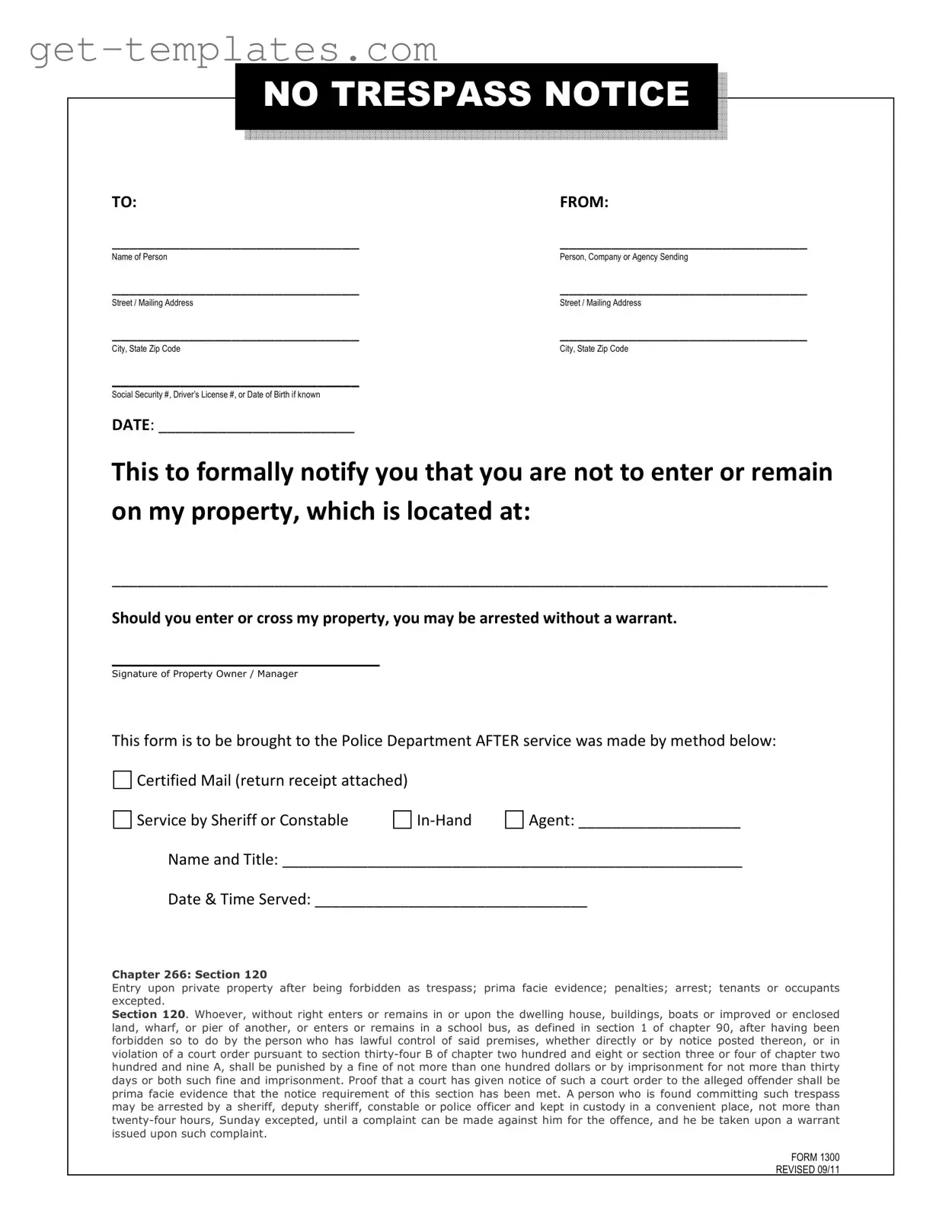What is a No Trespassing Letter?
A No Trespassing Letter is a formal document that notifies individuals that they are not permitted to enter or remain on your property. This letter serves as a clear warning and can help protect your rights as a property owner.
Why would I need to use a No Trespassing Letter?
You might need to use a No Trespassing Letter if someone is repeatedly entering your property without permission, causing disturbances, or engaging in unwanted activities. This letter helps to establish boundaries and can be a first step in addressing trespassing issues legally.
To fill out the form, you'll need to provide the following information:
-
Your name and contact information.
-
The name of the individual you are addressing.
-
The specific address of your property.
-
The date you are issuing the letter.
Make sure all details are accurate to ensure the letter is effective.
What should I do after sending the No Trespassing Letter?
After sending the letter, you should keep a record of how it was delivered. You can send it via certified mail with a return receipt, have it served by a sheriff or constable, or deliver it in person. Documenting this step is crucial for any future legal actions.
What are the potential consequences of ignoring a No Trespassing Letter?
If someone ignores a No Trespassing Letter and enters your property, they may be subject to arrest without a warrant. This letter acts as a legal warning, and law enforcement can take action if it is violated.
Can I customize the No Trespassing Letter for my needs?
Yes, you can customize the letter to suit your specific situation. While the basic structure should remain the same, you can add additional details or stipulations that are relevant to your circumstances.
Is a No Trespassing Letter legally binding?
A No Trespassing Letter is a legal notice that can be used in court if necessary. While it may not be a formal court order, it establishes your intent to prohibit access to your property and can support your case if you need to take further legal action.
How long is a No Trespassing Letter valid?
The validity of a No Trespassing Letter can vary based on local laws and the specific circumstances. Generally, it remains in effect until you revoke it in writing or until the situation is resolved. It’s a good idea to keep the letter on file for reference.
What should I do if the person continues to trespass after receiving the letter?
If the individual continues to trespass after receiving the No Trespassing Letter, you may need to contact local law enforcement. Provide them with a copy of the letter and any evidence of continued trespassing. This documentation will help support your case.

